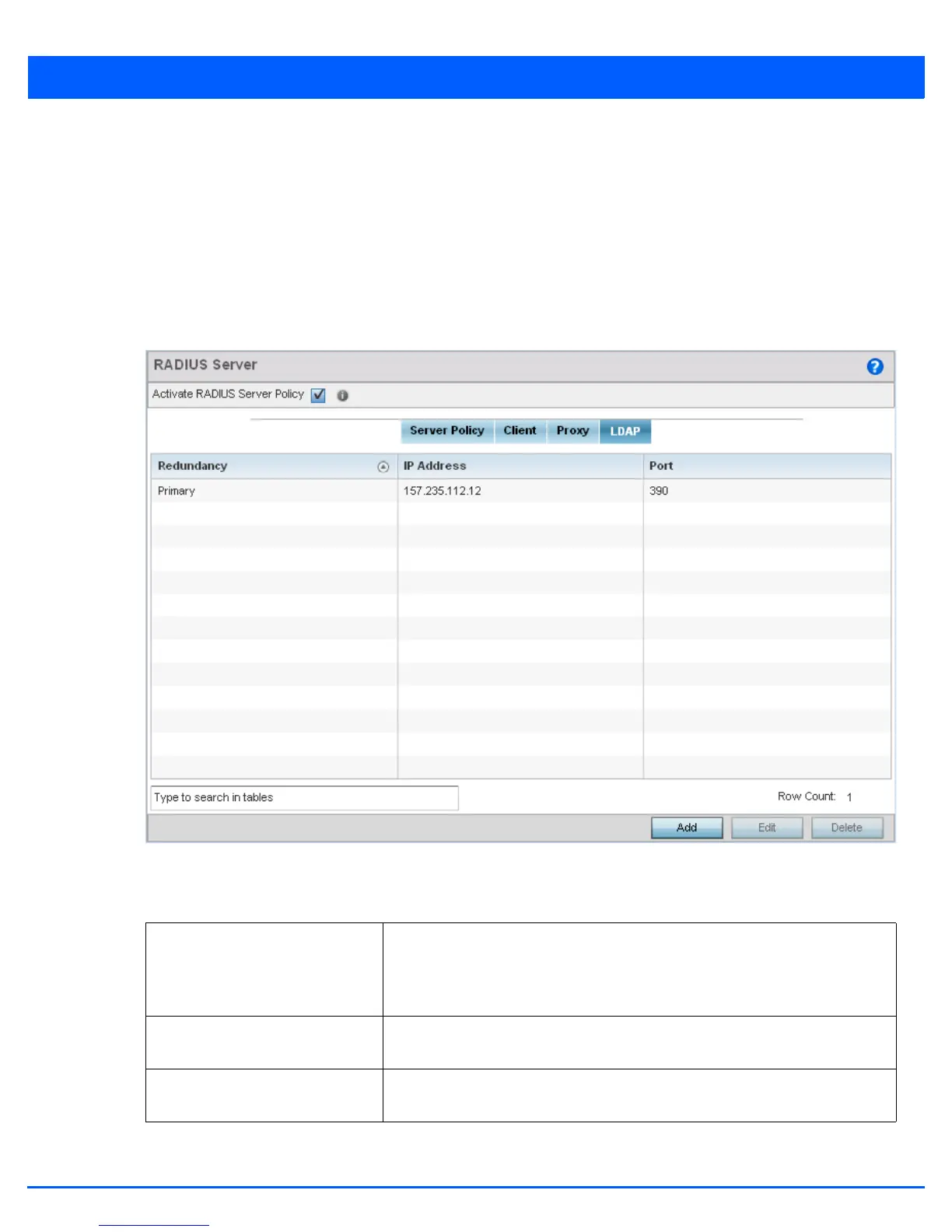9 - 52 WiNG 5.6 Access Point System Reference Guide
26. Select the LDAP and ensure the Activate RADIUS Server Policy button remains selected.
Administrators have the option of using the access point’s RADIUS server to authenticate users against an external LDAP
server resource. An external LDAP user database allows the centralization of user information and reduces administrative
user management overhead. Thus, making the RADIUS authorization process more secure and efficient.
RADIUS is not just a database. It’s a protocol for asking intelligent questions to a user database (like LDAP). LDAP however
is just a database of user credentials used optionally with the RADIUS server to free up resources and manage user
credentials from a secure remote location. It’s the access point’s RADIUS resources that provide the tools to perform user
authentication and authorize users based on complex checks and logic. There’s no way to perform such complex
authorization checks from a LDAP user database alone.
Figure 9-32 RADIUS Server Policy screen - LDAP tab
27. Refer to the following to determine whether an LDAP server can be used as is, a server configuration requires creation or
modification or a configuration requires deletion:
28. Select Add to add a new LDAP server configuration, Edit to modify an existing LDAP server configuration or Delete to
remove a LDAP server from the list of those available.
Redundancy Displays whether the listed LDAP server IP address has been defined as a primary
or secondary server resource. Designating at least one secondary server is a good
practice to ensure RADIUS user information is available if a primary server were
to become unavailable.
IP Address Displays the IP address of the external LDAP server acting as the data source for
the access point’s local RADIUS server.
Port Lists the physical port used by the RADIUS server to secure a connection with the
remote LDAP server resource.

